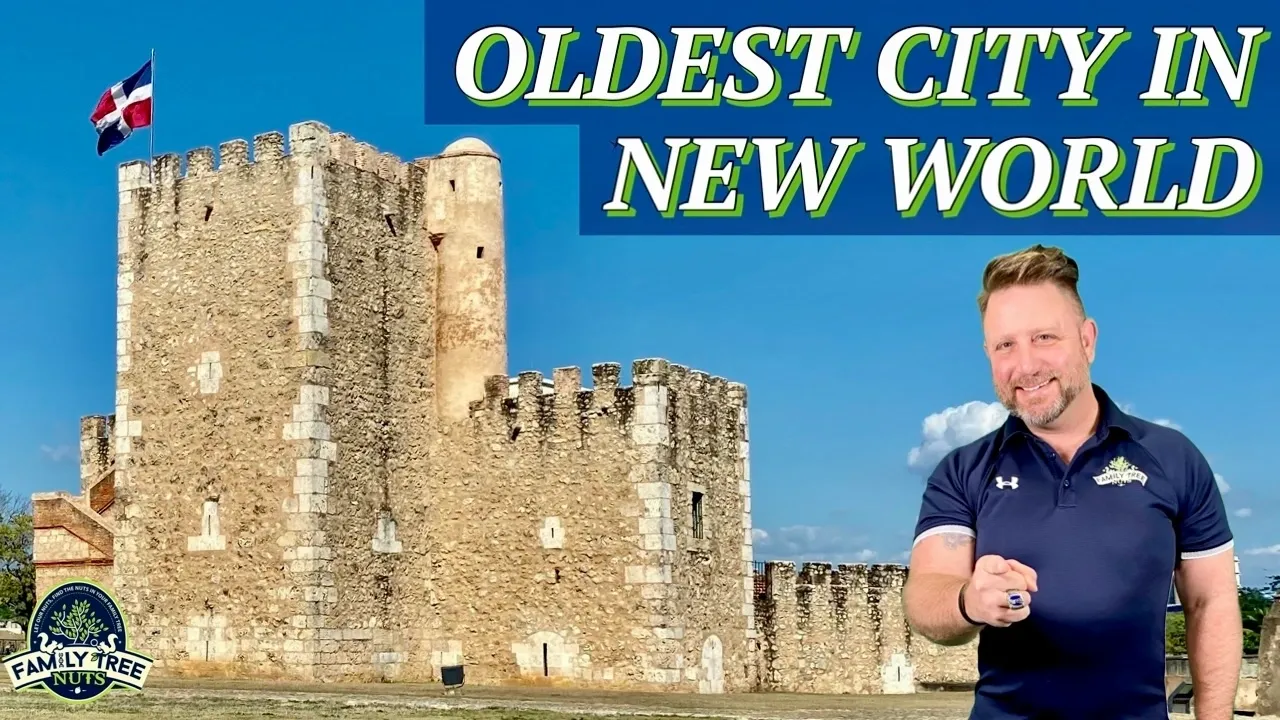
OLDEST CITY IN NEW WORLD, SANTO DOMINGO HISTORY!
It’s the oldest European city in the entire New World. Nowhere in the Americas can you find such a wealth of historical buildings and locations, most of which are over five hundred years old. In the Colonial Zone you can walk the same streets where men like Columbus, Cortes, Ponce de Leon, and Balboa once walked and see the places where the plans were made for countless Spanish explorations and adventures. Here you can see the tomb of Christopher Columbus, the home of his son Diego, the oldest cathedral and fortress, in the New World, as well an enormous museum full of medieval and New World artifacts. All of this and more we will cover in this article!
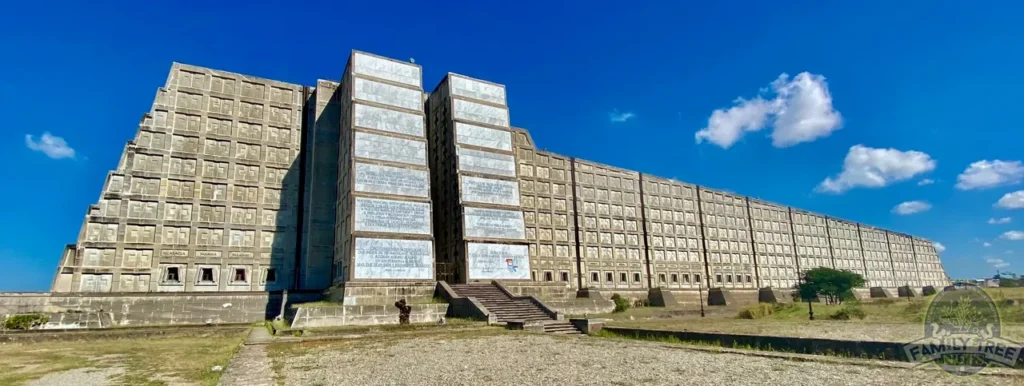
Recently we visited the historic Colonial Zone of Santo Domingo, in the Dominican Republic, and we wanted to share its history with you. First, let me set the tone of the time period. Santo Domingo was founded by the Spanish in the year 1496. I’ll say that again, 1496, that’s before the reign of Henry VIII, and Elizabeth I, and it had only been four years since the formation of Spain. That’s 111 years before Jamestown, the first settlement in what would become the United States. This town is more than 5.25 centuries old, and more than double the age of the United States.
The city was founded by Bartholomew Columbus, the younger brother of Christopher. I guess I should clarify something, in 1493 Christopher founded a city which he named Isabella, after Queen Isabella but that town died out and that makes Santo Domingo the oldest continually inhabited city. It quickly became the Spanish capital of the New World and where all the major explorations and colonization missions were launched from. Let’s take a look at some of the interesting places that we can visit today.
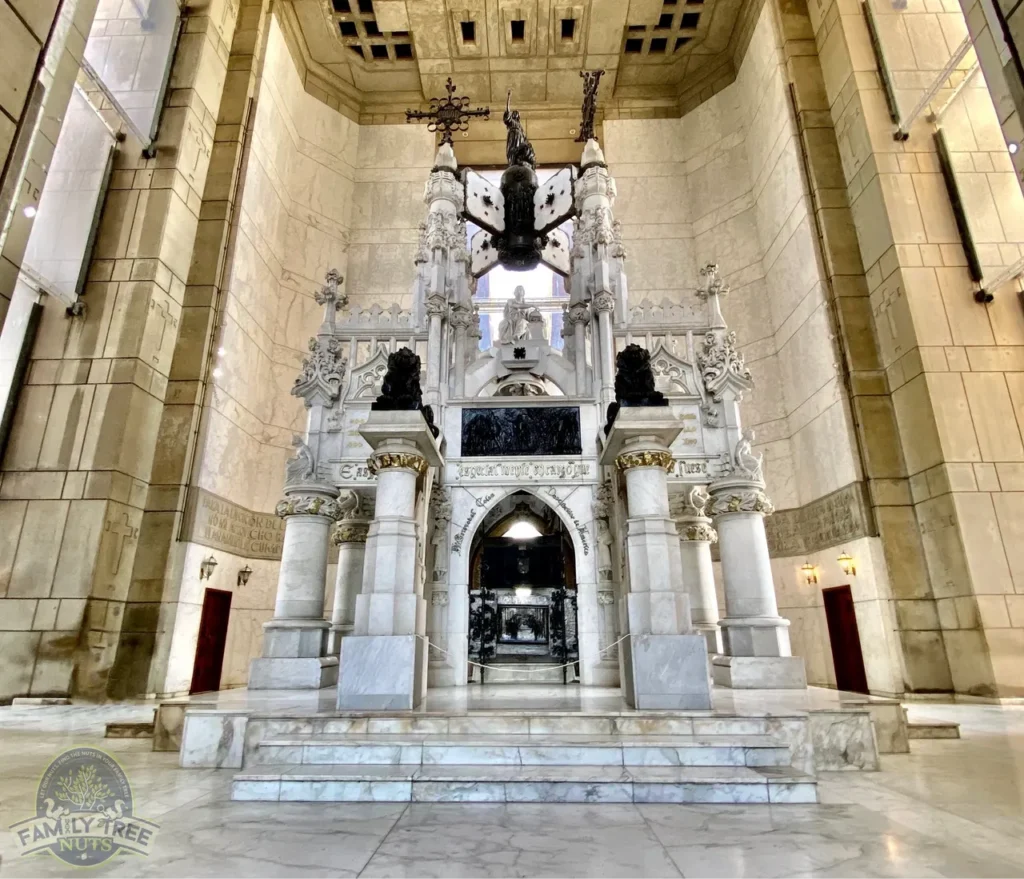
The first place that we will visit is The Cathedral of Santa Maria la Menor, which is renowned as being the first and oldest cathedral in the New World. The construction began in 1504 and was not completed until 1550. The cathedral is built in the gothic style and known for its simple yet amazing beauty. Like most cathedrals, several chapels line the outer walls of the sanctuary. In 1586, the English pirate/privateer Sir Francis Drake sacked Santo Domingo and set up his headquarters inside this cathedral. If you look closely, you see a cannon ball stuck in the roof from his raid.
Several archbishops are entombed here and from 1537-1795, for 258 years, so was Christopher Columbus. Today there is much controversy as to if his remains are here in Santo Domingo, or in the cathedral in Seville, Spain. To tell the story briefly, Columbus’ remains were moved in 1795, to Havana, Cuba, and then then in 1898, moved to Seville. Spanish officials have recently stated that they have DNA evidence that they have his actual remains. However, during a renovation of this cathedral in 1877, a box was found that was inscribed, “Illustrious and Distinguished Male, don Christobal Colon”. These remains are now housed in a tomb at the Lighthouse of Columbus, on the other side of the river. We will discuss this location later in this article, and for the full story, don’t miss our separate article from the lighthouse.
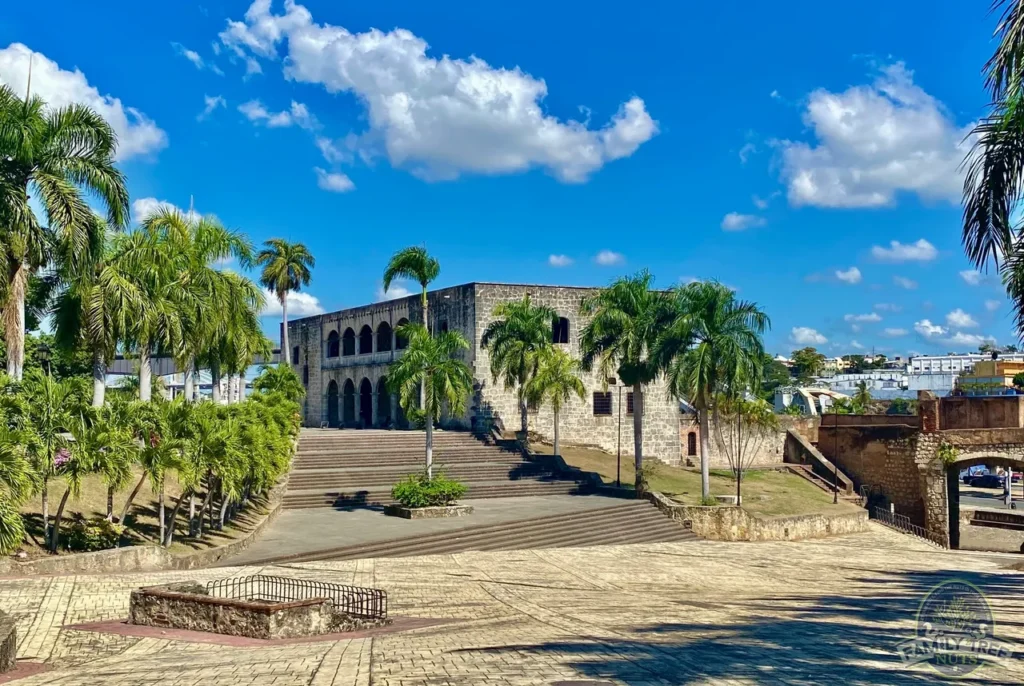
Outside the Cathedral, is Columbus Park, where you can always find a lively crowd, and a place to relax. The main attraction here is the statue of Christopher Columbus which is almost always covered with birds. If you visit here you will want to make sure you have time to take it all in and admire the beauty and incredible history that happened all around you.
Next, we have the Alcazar de Colon or the Fortress of Columbus. This was the palace and home of Diego Columbus, the son of Christopher. Diego followed his father and became the Governor of the Indies in 1508, and in 1511 began the construction of this fortress. Diego was married to Maria de Toledo, the cousin of the Spanish King Ferdinand II. Three generations of the Columbus family lived here and the palace is complete with furnishings, and items from the time period, many original to the Columbus family. You can walk the grounds between the palace and the river and really take your mind back to the early 1500s. Be sure to see our individual article from here.
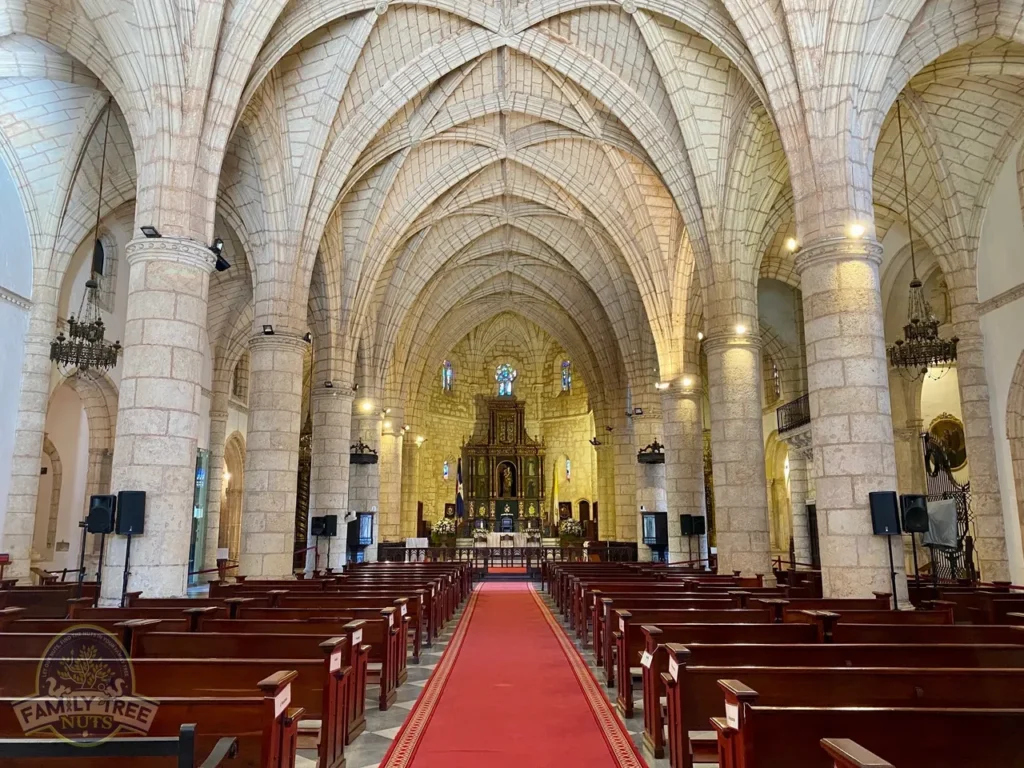
Next, we have the Ozama Fortress which is the oldest European military structure in the Americas. The fortress was built beginning in the year 1502 and overlooks a strategic place on the river inlet. The site contains a large section of the original city walls, which in the past as well as today, were lined with cannons. In the center of the facility is the approximately sixty feet tall tower, which during the 1500s was the tallest European structure in the New World. The tower resembles a European castle and in reality, it was built in the same time period as many castles were in Europe. It is one of the very few places in the Americans where you can visit a place like this.
You are free to wander its many rooms, dungeon, and its enormous powder storing facility. The statue in the courtyard is of the governor of the fortress from 1533 to 1557, and the author of “The General and Natural History of the Indies”. The site was the scene of numerous battles against pirates, the English, French and Dutch forces and of course, like I mentioned earlier was seized in 1586 by the English pirate/privateer Sir Francis Drake. The fortress was also used as a prison and even at one time housed Christopher Columbus as a prisoner. The fortress served as a prison until 1965!

Next, we find the home of the famous conquistador Hernan Cortes. The home was built in 1502, and soon became occupied by him. Cortes is best known for conquering the Aztec Empire and claiming Mexico for Spain. This house is where he planned out his mission. Today the building is the French Embassy.
Our next stop is the Museum of the Royal House which originally was the Palace of the Viceroy of Santo Domingo. It was built in the year 1511 and was the first Spanish, or European headquarters in the New World. The building was used for centuries as the governmental palace and in 1973 was turned into a museum. The museum is enormous and will take you several hours to really study it in its entirety. It is full of artwork, artifacts, weapons, and armor, throughout, and not only the history of the Dominican Republic, but also the Spanish Empire. The building is broken up by gorgeous court yards so be sure to take in the beauty from the porches.
Our next to last stop is the National Pantheon of the Dominican Republic, which was built in the early 1700s. It was originally a Jesuit church but now entombs many of the Dominican Republic’s most important people.
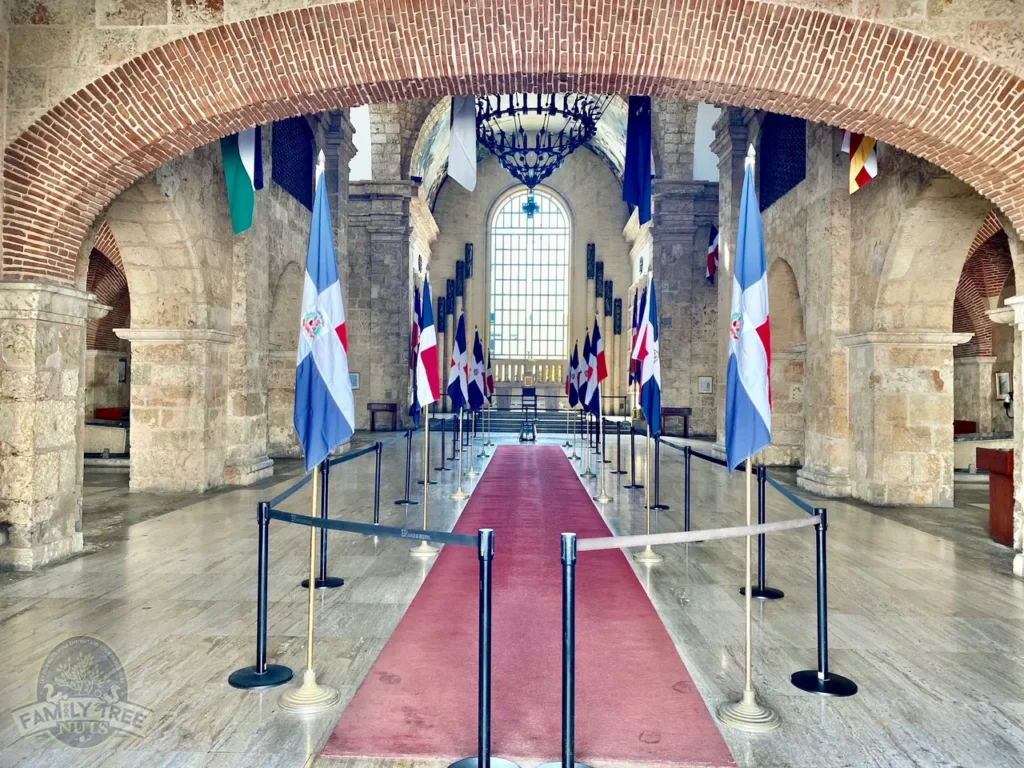
Our last location that we will tour is the Faro a Colon, or the Lighthouse of Columbus. This is an active lighthouse and a monument build to celebrate the Christianization of the New World. This building isn’t old like the others we have visited, it was inaugurated in 1992, the quintennial of Columbus’s initial voyage of discovery. However, its connection with history cannot be denied. The lighthouse is so powerful that it can be seen all the way to Puerto Rico and outer space.
The monument is in the shape of an enormous cross and the inner hallway is full of rooms dedicated to each Latin American country and houses museums with history from each one. The highlight of the location is under the light where you will find the tomb of Christopher Columbus. Like I said earlier, there is controversy as to whether Columbus’ remains are here, in Seville, Spain, or in both locations. We cover this topic in detail in our individual video from here, so be sure to check out that video as well.
So, there you have it, a brief tour of historic Santo Domingo. What do you think? Have you visited here before? Did you know any of this story before or after you visited? Have you now added this location to your bucket list? We’d love to hear from you and please let us know what you think in the comments below. Also, don’t forget to see our two other individual aricles from Santo Domingo, which are at the Lighthouse to Columbus, which contains his tomb, as well as our article at the Alcazar de Colon, the home of Christopher Columbus’ son, Diego.
Santo Domingo is one of those places that most people would never think to visit, but it is where you have to go to find the oldest things in all the Western Hemisphere. It’s where you can touch history that is half a millennium old. We are proud to help preserve the stories and share them with all of you. Be sure to see our video below.
-Col. Russ Carson, Jr., Founder, Family Tree Nuts
